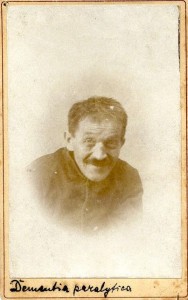Though most patients in insane asylums could not escape physically (see last two posts), doctors may have inadvertently caused them to lose touch with reality by dosing them with opium and other narcotics. In The Actions of Neurotic Medicines in Insanity (1871), Dr. T. S., Clouston described experiments he conducted on patients using medicines like bromide of potassium, opium, cannabis Indica (a more sedative variety of the cannabis family), along with Scotch whiskey and beef tea as controls. He particularly wanted to see how these substances acted on patients who were in a “maniacal” or excited state. (Perhaps to his credit, Clouston performed the experiments on himself and his assistant, as well.)
Clouston found that none of the substances created a narcotic effect in excited subjects, though they did produce what he called a “natural sleep.” He later experimented on chronic patients, giving them increasing doses of opium over twelve weeks,. Higher dosages quieted their levels of excitement, though the effect did not last. Clouston took careful notes about his subjects, and eventually combined a tincture of cannabis and a dose of bromide, which worked very well in most of the patients. He had continued this treatment for eight months at the time he wrote.
Clouston seems to have been very careful with his patients, noting their temperature, pulse, weight gain or loss, and so on, and adjusting medicines accordingly. He tried to give patients enough medicine to calm their manic states, without unduly sedating them, and he stopped treatment whenever he saw that a patient could not tolerate it well. However, given the ease of administering these powerful drugs to patients, who can say how many doctors indiscriminately dosed patients for the convenience of their asylum’s staff? In a period when little was known about the background causes for psychological problems, keeping patients in a narcotic haze may have been the easiest–and most common–thing to do.
- Tincture of Cannabis

























